Hellfire Pass – Eye Witness Account
Out in the jungles of Thailand, far from home and far from the Singapore base where they had been captured, thousands of men now found themselves working as slave labour for the Japanese army. Work on clearing the jungle to lay a railway track was now in full swing. Now based in remote camps in the forest with the most basic facilities, every single man was now suffering from the effects of malnutrition and starvation. The death toll was mounting, As Dr Hardie had recorded at another camp on Christmas Day, even before the men began their hard physical labour.
Alistair Urquhart was working on one of the most notorious sections of the railway, one that would later be dubbed ‘Hellfire Pass’ by the Australian troops who worked on it. The early stages meant clearing a path though the trees, with a designated width and distance to be cleared every day. If it wasn’t done they had to work into the night. These was only limited scope for some respite:
Another squad were tasked with removing the rocks, trees and debris, another separated the roots to dry them out and later burn them. Meanwhile on the pickax party some men were going hammer and tong.
I said to one chap near me who was slugging his pick as if in a race, ‘Slow down mate, you’ll burn yourself out.’ ‘If we get finished early,’ he said, puffing, ‘maybe we’ll get back to camp early.’ But the soldiers would only find something else for us to do. And then the next day Japanese expectations would be higher.
Personally I tried to work as slowly as possible. The others would learn eventually but I soon discovered ways to conserve energy. If I swung the pick quickly, allowing it to drop alongside an area I had just cleared, the earth came away easier It also meant that while it looked as if I were swinging the pick like the Emperor’s favorite son, the effort was minimal.
Nevertheless under the scorching Thai sun and without a shirt or hat for protection, or shade from the nearby jungle canopy, the work soon became exhausting. Minute after minute, hour after hour, I wondered when the sun would drop and we could go back to camp.
Around midday the Japanese called for yasume. We downed tools and sat and ate rice, which we had taken with us from camp in the morning. When I opened my rice tin I found the contents had begun to ferment. It was almost rice wine and tasted horrible. But I ate it anyway.
Lunch usually lasted for around thirty minutes at the railway, depending on the officer in charge. If he were sleepy or tired, it might be longer. We used to love it when he fell asleep!
…
By mid-afternoon we had finally completed the first section. Despite enormous toil and effort over the previous ten hours, our progress had been incredibly slow. We had managed to clear the required thirty-foot width for only about twenty feet.
It was the beginning for us of what would become the most notorious railway construction that the world had ever seen. The Japanese engineer came over to inspect our work. He studied the clearing from several angles, using various surveying instruments, before declaring, ‘No gooda! Do again! Deeper!’
Utterly demoralized we had to go back to the beginning and manually dredge another foot of soil. We were all in various stages of beriberi, pellagra, malaria, dengue fever and dysentery. A new illness had also started to ravage some unfortunate prisoners. Called tinea, it was nick- named ‘rice balls’ because the hideous swelling had the tormenting tendency to attack, crack and inflame the scrotum.
Resource: WW2today.com
Click on images to enlarge
#############################################################################################
Current News – WWII & Korean War –
The wreckage of the USNS Mission San Miguel, a WWII & Korean War tanker is finally located…
###########################################################################
Military Humor – Aussie/New Zealand style
#############################################################################################
Farewell Salutes –
Gordon Boyle – Beechwood, AUS; RA Air Force # 80337
Charles Christiansen – Cambridge, NZ; RNZ Air Force # 4311287, WWII, Fiji Leading Aircraftsman
Joy Dowler – Albany, NZ; WRNZ Air Force # W5652, W6055, WWII
Milton Frederick – W.AUS; RA Army, WWII
Ben Kuroki – Hersey, NE & Camarillo, CA; US Army Air Corps, WWII, ETO, POW & PTO
Eliot Lang – New Plymouth, NZ; RNZ Air Force # 432743, WWII
Vernon McIntyre – Kelmscott, AUS; RA Air Force, WWII
Robert Phillips – Auckland, NZ; RNZ Army # 436394, WWII
William Sievers – AUS; RA Air Force # 425977
Kathleen Wishart – Christchurch, NZ; WRNZ Army Nursing Corps # W242634, WWII
################################################################################
Posted on September 7, 2015, in Uncategorized, WWII and tagged 1940's, Australia, Burma, CBI, History, Military History, New Zealand, Tributes, USA, veterans, Vintage. Bookmark the permalink. 48 Comments.
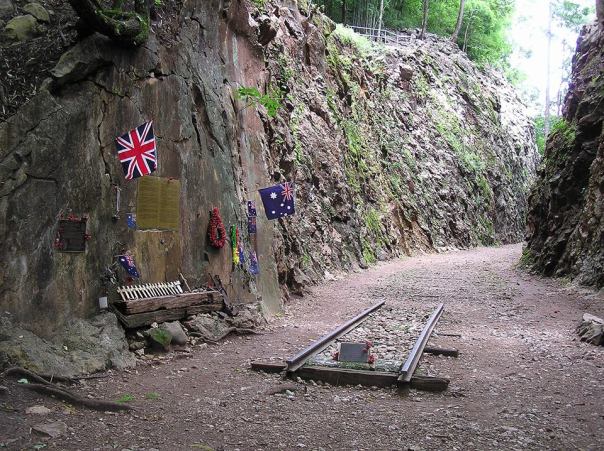
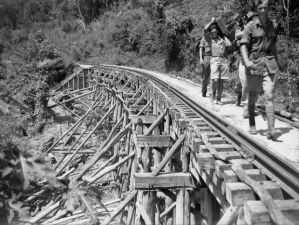
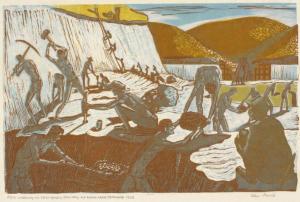
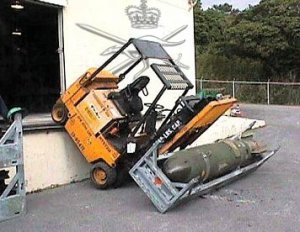
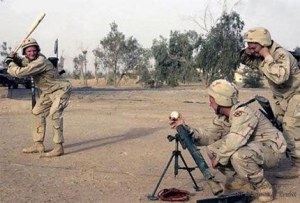
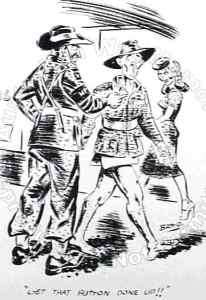







What men endured, and survived, never ceases to amaze me. We are lucky indeed, to have been spared this torture.
Best wishes, Pete.
LikeLiked by 1 person
I don’t think mankind will ever endure something like WWII again, they invent so many new and improved ways of being depraved. Whoa, did I ever get morbid there! 🙄
LikeLike
Living conditions were below basic. Indeed, they may have faired better out in the jungle just trying to survive. Incredible inhumanity, incredible fortitude.
LikeLiked by 1 person
They probably would have had more to eat out in the jungle.
LikeLiked by 1 person
I still grieve for all who suffered in a horrible place in such horrid climates.
LikeLiked by 1 person
I know I can not visualize what these men went through, but grieve for them – I do too.
LikeLiked by 1 person
If there are any survivors left of Hellfire pass, they could only remember the experience with pain and torment, an unbelievable task that saw the loss of many men, Inhumanity at it’s worse.
LikeLiked by 1 person
Hilary specializes in CBI research, you might bring that up to her as well. I can not fathom how any came home.
LikeLiked by 1 person
Thanks for remembering.. this is just amazing stuff to recount… again thanks..
LikeLiked by 1 person
When I find stories like these – how can I NOT include them!?! Thank you for reading and taking the time to comment.
LikeLiked by 1 person
A nightmare
LikeLiked by 1 person
Yes, it truly was!
LikeLiked by 2 people
I expect the Thai’s appreciate the railroad if it is still running. Amazing how many of our men and women have been prisoners in that part of the world. I love those cartoons. Thanks
LikeLiked by 1 person
The Burma RR was shut down in 1947, but a part of it was reopened in 1957. If it is still running – deserves further research. Thanks for your interest and glad you enjoyed the cartoons; they are a little reprieve from the horrific events of war.
LikeLike
Reblogged this on quirkywritingcorner.
LikeLike
Thank you for helping to keep the memories alive!
LikeLike
Thank you for telling this story. It is horrific and difficult to read about such inhumanity, but it is a story that needs to be told. It is important that we never minimize or take for granted the sacrifices others have made to preserve our home. Thank you.
LikeLiked by 1 person
Very well said, Claire, Thank you.
LikeLiked by 1 person
Such memories are both tragic and heroic. The brutality is hard to comprehend. The resilience is incredible. Having lived in the Far East I can imagine what the heat and humidity were like. A moving story.
LikeLiked by 1 person
Thank you, Andrew. I appreciate hearing your perspective.
LikeLike
The construction in Hellfire Pass was quite a feat. Let’s hope we didn’t treat our war prisoners in the same cruel manner that our young men were treated. Imagine it was a case of survival of the fittest, or those most determined to return to their families.
LikeLiked by 1 person
I don’t believe we had anything like Hellfire Pass, but there was good and bad on both sides. Thanks for visiting, Bev.
LikeLike
Great post today, GP. Those pictures say volumes.
LikeLiked by 1 person
I agree. You almost don’t even need the story when you see the evidence in the pictures.
LikeLiked by 1 person
The way these guys were treated is absolutely shocking. How anyone survived is beyond me and it shows a resilience beyond comprehension. The memorial is really quite moving but much more needs doing to honour their sacrifice. Thank you for bringing this story to us it really starts to bring it home.
LikeLiked by 1 person
Very glad to see you here, I appreciate your visits and comments. Thank you!
LikeLiked by 1 person
I am just reading Jack Chalker’s book, Burma Railway. He is the artist whose paintings and drawings show us most clearly what it was really like. He was in Kanyu camp just south of Hellfire Pass and saw the Australians working there. This is the most beautifully produced book as well.
LikeLike
I’ll have to look into it, Hilary. Thank you.
LikeLike
Another great contribution on your blog that keeps the memories of the ordeals and hardships soldiers had to go through in the Pacific theater of WW 2! It is so important to keep the memories alive. Thank you for sharing, GP!
LikeLiked by 1 person
And thank you for reading and commenting, Peter. I hope you know that I appreciate it.
LikeLike
This is harrowing tale, told with sympathy and humanity. I have tried hard but there are two aspects of the war I just cannot either forgive or forget. The concentration camps in Europe and the behaviour of the Japanese to anybody who wasn’t Japanese.
LikeLiked by 2 people
Both incidents are very difficult to comprehend, John. I thank you for stopping in today.
LikeLike
Reblogged this on Janet’s thread.
LikeLike
Thank you Janet for all you do.
LikeLike
Amazing images. Thanks for another vivid post. Happy Labor Day.
LikeLike
Enjoy your Labor Day as well [we’ve got pouring rain here!] Glad you liked the pictures.
LikeLike
Very moving account of working on the Hellfire Pass, GP….
LikeLike
Thank you. I appreciate you taking the time.
LikeLike
It’s hard to imagine anything being worse than being at war, but being a prisoner under those conditions had to be worse than fighting. The spirit that kept them going under those circumstances was incredible.
LikeLike
Everyone has trouble believing what happened and how they survived – I sure don’t have any answers to that! Thanks for coming by, Dan.
LikeLiked by 1 person
I can’t imagine having to do that kind of work all day long…and then doing it while you are sick and malnourished…incredible.
Loved the video, so glad they left it there.
LikeLike
The survival of the prisoners is one that amazes most everyone, Mrs P.! I am glad you enjoyed the video – another piece to a huge puzzle is found.
LikeLiked by 1 person
The photos are haunting and the words almost unbearable to read.
LikeLike
At least his story is told and those men will not go forgotten. Sorry about the harshness, but thank you for reading, Sammy.
LikeLiked by 1 person
No, don’t be sorry. We need to keep these men, memories and events alive. Your site is building a legacy as are others like it.
LikeLiked by 1 person
Thank you.
LikeLike
I visited HellFire pass in November 2013. Simply walking down the hill and through the cutting the men excavated was sapping in the heat. It was a miracle any of them survived to tell the story.
LikeLiked by 3 people
I can believe that. I think it is amazing that you walked it – just the thought of those men must have been inspirational! Thank you for bringing your story to us.
LikeLiked by 3 people